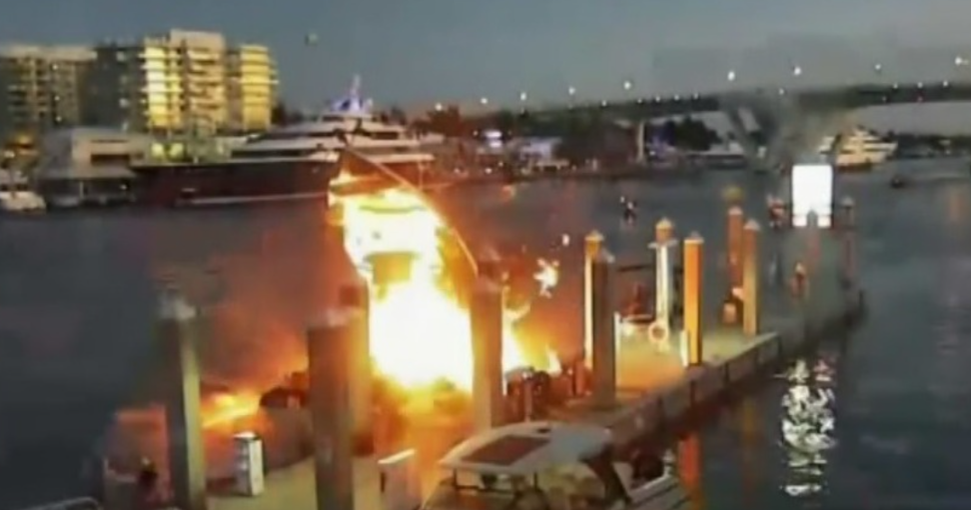Storm Conference Views Hurricane Andrew's Legacy
FORT LAUDERDALE (CBSMiami/AP) —Hurricane forecasters have improved their ability to predict where a storm will go since the time Hurricane Andrew made a catastrophic landfall in South Florida two decades ago, however, the ability to predict how bad, or intense a storm will be still eludes them.
Bill Read, outgoing director of the National Hurricane Center, also believes the ability to predict a storms intensity will remain a challenge for the next chief of the NHC.
Read joined Florida's emergency managers in Fort Lauderdale at the annual Governor's Hurricane Conference to reexamine Andrew's legacy. The Category 5 hurricane remains one of the most expensive natural disasters ever in the United States.
While forecasters have significantly improved their ability to predict a storm's path, giving coastal residents more time to prepare or get out of its way, the remaining challenge is to see a day or two in advance how big a storm could be or whether a storm will rapidly intensify the way Andrew did as the hurricane approached the Bahamas and Florida in 1992, director Bill Read said.
"That's been still an area we haven't made much gains on," Read said.
The important lesson Florida learned from the 1992 storm was to enforce the most stringent building codes in the nation, Read said.
"Y'all passed a building code that actually made sense," said Read. "Just about anywhere else I go you have these issues of, can I stay in my house or not? That's a tough question to answer when it's not a well-built house."
Andrew also led to equipment upgrades for hurricane forecasters.
Reconnaissance aircraft that fly into storms to collect data now carry equipment that measures microwave radiation at the sea surface 10,000 feet below. That gives forecasters more information about how strong a storm is at that moment, James Franklin, who leads the hurricane specialist unit at the hurricane center in Miami, said in an interview last week.
The Hurricane Forecast Improvement Project, which the National Oceanic and Atmospheric Administration started three years ago, is exploring the use of Doppler radar in forecasting a storm's intensity, Franklin said.
Protecting people who live in areas vulnerable to storm surge drives the urgency behind improving forecasters' ability to see whether a hurricane will blow up, Franklin said.
"Those things, the intensity and the size, affect storm surge, which is the hazard that has the greatest potential to cause a large loss of life," Franklin said.
As federal budgets continue to tighten, maintaining all the equipment that forecasters use also will be a serious challenge for the hurricane center's next director, Read said.
That equipment includes aging polar-orbiting satellites that offer more detailed information on moisture, temperatures and other weather data than geostationary satellites that provide pictures of much of the earth from higher levels.
"Right now I see it as a very expensive infrastructure that it takes to be good at doing weather forecasting, and of course the hurricanes," Read said. "Having the funding to maintain that and expand the capability is a challenge."
Read steps down June 1, the start of the six-month Atlantic hurricane season. After four years as head of the hurricane center, Read says he's looking forward to making weather forecasting a hobby instead of a full-time job.
The man who repeatedly urges coastal residents to have evacuation plans ahead of storms and to stock up on food and water in case of post-storm emergencies won't be leaving behind his storm preparation habits, though. Read will return to his home in Galveston County on the Texas coast — an area vulnerable to hurricanes. In 1900, Galveston was struck by a hurricane that killed about 6,000 people.
Although his fortified home is 30 feet above sea level and out of the risk of storm surge, Read says he stocks up on supplies to last seven days without power, just in case.
Deputy director Ed Rappaport will take charge as interim director if Read's successor is not named before June 1.
NOAA's Climate Prediction Center is expected to release its hurricane season outlook next week.
The 2011 hurricane season was the sixth consecutive year without the U.S. landfall of a major hurricane: Category 3 or higher, with winds of 111 mph or higher. However, it produced the third-highest number of tropical storms on record. Among those 19 named storms was Hurricane Irene, which paralyzed the Eastern seaboard and caught parts of the Northeast by surprise with deadly flooding. Irene was one of the costliest storms in U.S. history.
(TM and © Copyright 2012 CBS Radio Inc. and its relevant subsidiaries. CBS RADIO and EYE Logo TM and Copyright 2012 CBS Broadcasting Inc. Used under license. All Rights Reserved. This material may not be published, broadcast, rewritten, or redistributed. The Associated Press contributed to this report.)



